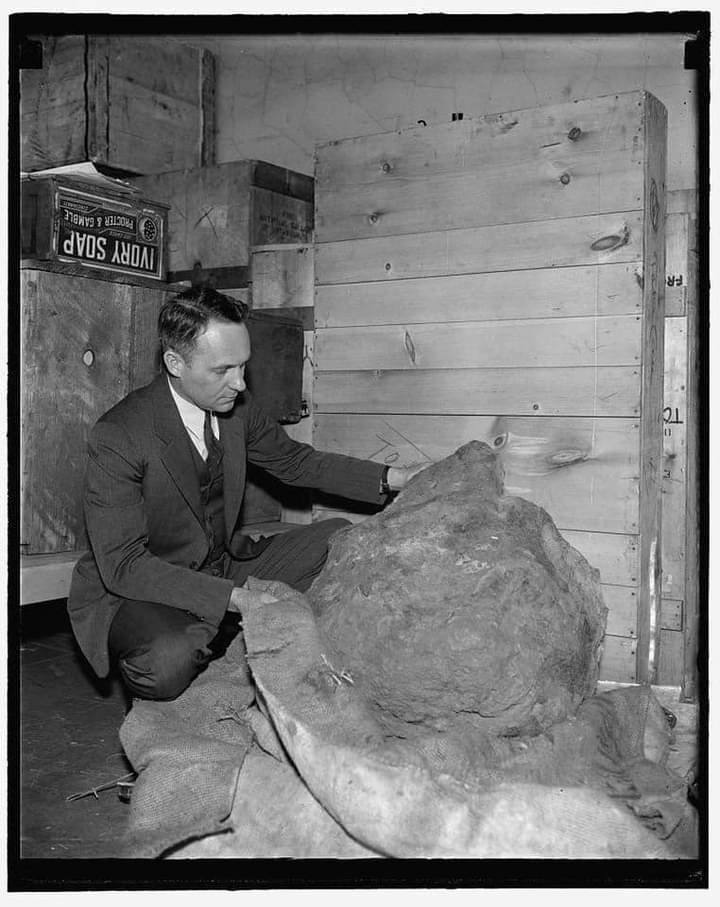“A fragment of largest shooting star placed in Smithsonian Institution. Washington, D.C., April 4. This 2,000 pound meteorite, probably a fragment of one of the largest shooting stars which have struck the earth, has been added to the meteorite collection of the Smithsonian Institution. It was found in 1903 near the town of Pearcedale, not far from Melbourne, Australia, the general area of the Cranbourne Meteorite which was discovered in 1854. E.P. Henderson, of the Smithsonian Institution, is pictured inspecting the huge mass, 4-4-39”
via Library of Congress, no known restrictions
via Library of Congress, no known restrictions
“A fragment of largest shooting star placed in Smithsonian Institution. Washington, D.C., April 4. This 2,000 pound meteorite, probably a fragment of one of the largest shooting stars which have struck the earth, has been added to the meteorite collection of the Smithsonian Institution. It was found in 1903 near the town of Pearcedale, not far from Melbourne, Australia, the general area of the Cranbourne Meteorite which was discovered in 1854. E.P. Henderson, of the Smithsonian Institution, is pictured inspecting the huge mass, 4-4-39”
via Library of Congress, no known restrictions



